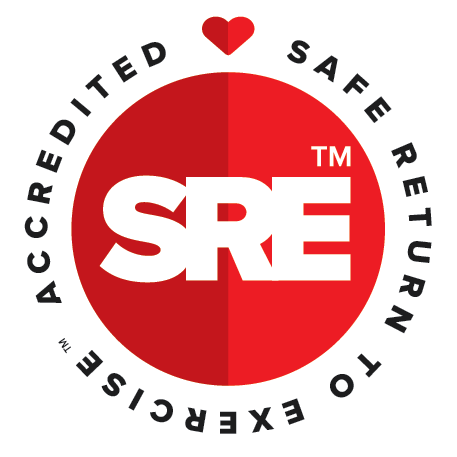Empowering your birth with acupuncture and acupressure
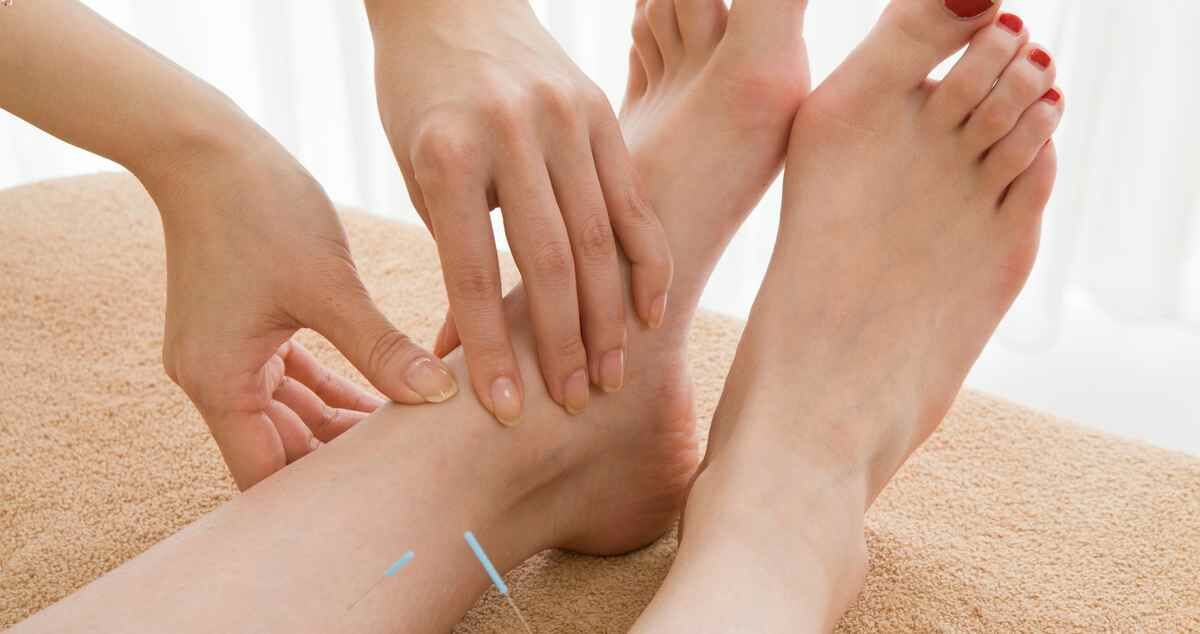
Women in China have been using acupuncture and acupressure for thousands of years to assist with preparing their body for labour and birth, as well helping them to recover postnatally.
There is so much that acupuncture and Chinese Herbal Medicine can do during your pregnancy journey – they can even assist you to have an expedient (quicker) labour and birth!
In recent years, many studies have been conducted into how acupuncture may help with decreasing labour times and increasing the strength of contractions. These studies have now been published and, as a result, many birthing classes such as Shebirth (registered), hypnobirthing and calm birth, also include information on acupressure points to aid with birth and reducing pain during labour.
I am often contacted by women who are over 40 weeks wanting induction acupuncture to assist with bringing on labour. While acupuncture can assist with this, it is up to the baby to decide when it will be born. However, we can assist with ripening the cervix, which will lead to a more efficient labour.
I highly recommend seeking out a women’s health Chinese Medicine practitioner / Acupuncturist from approximately 34 weeks to aid with birth preparation – or, as soon as you find out that you are pregnant – as acupuncture can be used throughout your pregnancy to enhance your overall health, immunity, aid with many pregnancy issues and assist with anxiety, stress and much more!
While we focus on balancing the body, increasing energy and building up blood, there is one particular point that we focus on from 35 weeks of pregnancy. This point is called Spleen 6.
Why is spleen 6 so important?
Spleen 6 is such an important point as it helps to ripen the cervix.
During your pregnancy, your cervix is long and hard. Your cervix plays a big role in determining the success of induction of labour. During pregnancy, the cervix usually is firm and stiff enough to help hold the baby in the uterus. That’s a good thing for most of the pregnancy. But in the final days or weeks before delivery, the cervix starts to soften and open up. Basically, it’s getting ready for labour. When this happens, we say that the cervix is becoming “favourable”.
Spleen 6 helps the body to begin to ripen the cervix naturally. It is also a point that you can easily apply acupressure to yourself daily, in between treatments, and even during your labour if your cervix has not yet begun to soften.
Typically, Spleen 6 is used to promote labour and cervical dilation and will not be used during a pregnancy until approximately week 36.
When Spleen 6 is needled or acupressure is applied, there is often a spreading sensation that travels up the spleen channel (it travels up the leg), or an aching sensation felt by the woman in her cervix (similar to period pain). I have found – quite commonly – that for those women who have a strong sensation on needling this point, they have gone into natural labour quite quickly after a treatment (generally within 2 days).
How do we use Spleen 6 to assist with cervical ripening?
From 36 weeks, you can begin by firstly massaging through the spleen channel every couple of days.
To do this begin by:
- Starting at the shin bone on the inner leg, massage using small circles with thumb or index finger to the side of the tibia bone, passing through spleen 6 until you reach the calf muscles.
- Only work to your level of comfort while massaging – if the pressure is too much or it feels uncomfortable, adjust the pressure, as the spleen channel and especially Spleen 6 point may be tender to touch (it generally is quite tender to touch).
Use this massage technique for 7 days. Then, at 37 weeks, you can begin using only acupressure to Spleen 6.
Spleen 6 – how to find the point
Spleen 6 is located on the inside of the lower leg. To find this point, find the highest point of the inside ankle bone (the medial malleolus). Place 4 fingers on the tip of the highest point and at the end of the last finger, you should feel a little “dip” – this is Spleen 6. You will know that it is Spleen 6 as it will feel tender to press it.
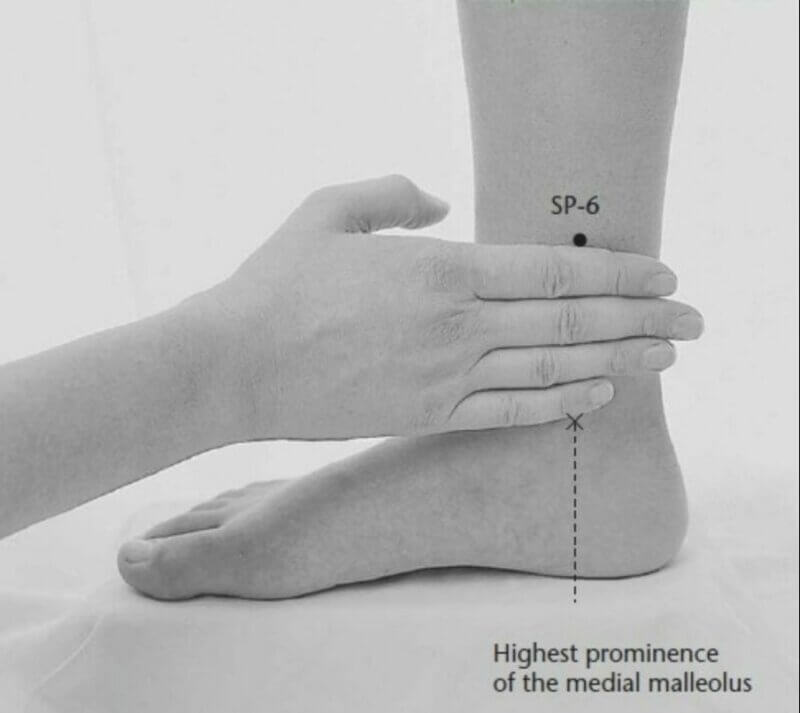
To apply acupressure, hold this point continuously for 3-5 minutes. You can press this point on both sides at the same time or ask your partner or midwife to apply pressure.
In my clinic, I always apply “tacks” (which are small needles on an Elastoplast). This helps the ladies to find the point easily and also enables them to apply self-pressure. When they go home, I instruct them to apply pressure every second day in the beginning. As we get closer to 40 weeks, it becomes daily and, once over 40 weeks, approximately 3 times a day. This way we are really focusing on ripening the cervix.
In conjunction with applying pressure to Spleen 6, I also recommend drinking 4 cups of raspberry leaf tea and consuming 5 dates a day to enhance labour.
Birth Preparation
30-34 weeks is a great time to check in with your Acupuncturist. From 30 weeks, we begin working with you for your birth preparation. It is now recommended that we see you about every 2 weeks and, from 35 weeks on, every week.
In these weeks we focus on improving your stamina (increasing energy; building up energy and blood) preparing for your birth. We also support you emotionally. We aid with reducing stress and improving digestion. We explain birth positions, optimal foetal positioning and much more to guide you through those weeks prior to your birth.
If your baby is in a posterior position, we can use the acupuncture point Bladder 67 to aid with turning the baby into an anterior position.
Bladder 67 is located on the outside corner of your little toenail. You can use a ballpoint pen to apply pressure to this point for 5 minutes a day to aid with turning a posterior baby into the anterior position. You can also use the spinning babies’ positions to assist with aiding baby to change their position. Sitting forwards with your legs lower than hips in the optimal foetal position can also help.
Location of Bladder Point 67 – zhiyin
The usual way of locating Bladder point 67 is to draw lines along the lateral border of the toenail and along the base of the toenail. Where they meet is the point.
However, people’s toes vary, and as you age, your toenail can change along with the shape of your toe. Often the point is about 0.1 cun proximal to the lateral corner at the base of the nail.
And sometimes it’s somewhere else! Best tip? With a sharp fingernail, press gently into the area where you expect the point to be and round about it, and when there is soreness (or the most soreness), mark the point by making a cross in the skin with your fingernail.
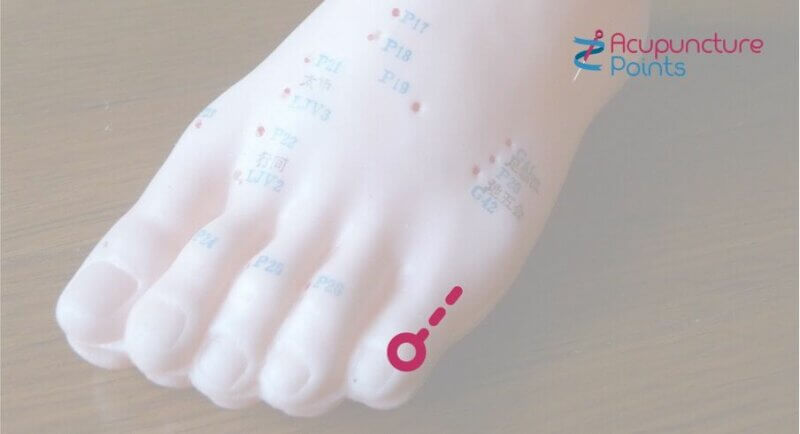
Click here for a video of how to find the point.
In Chinese medicine, Bladder 67 is used for malposition of the baby –that is, breech presentation and posterior babies as well as in difficult labour.
Studies have shown that women who have visited an acupuncturist from 35 weeks onwards have had shorter labour and recovered quickly postnatally.
Breech Presentation
Acupuncture and moxibustion have a high success rate in enabling a baby to move from a breech position to an anterior position. This treatment is best performed and most successful when performed between 32-37 weeks pregnant as baby still has enough room to move. We can also assist with moxibustion 4-5 days prior to an ECV. Studies have shown that moxibustion performed daily 4-5 days prior to an ECV have a higher success rate.
Moxibustion is used on the above point – Bladder 67 – daily for 10 days in order to turn the baby. Even if your baby turns prior to the 10 days, your baby may revert back to a breech position so it is important to continue with the moxibustion for the full 10 days.
Your acupuncturist will demonstrate to you how to apply moxibustion to bladder 67 as well as provide you with a handout on how to safely store the moxa stick.
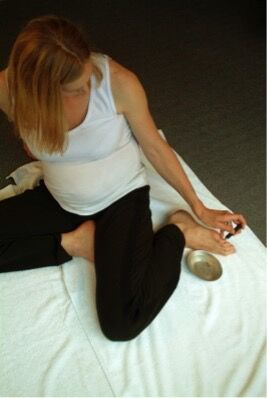
In general, moxa is applied to the acupuncture point Bladder 67 for 20 minutes a day – for 10 days consecutively. It needs to be applied to both toes daily (10 minutes a side).
Breech presentation may occur due to the safety of the baby, i.e. this is the safest position for them, due to an anatomical cause such as the position of the pelvis, shape of the pelvis or tight ligaments or tendons of the pelvis area and uterus.
Daily exercises from spinning babies, the Webster method (this needs to be performed by a qualified practitioner), moxibustion and acupuncture can all be used in combination to assist with changing the baby’s presentation.
Labour Induction
Acupuncture has great success with aiding the body to go into labour naturally. While induction is typically used, I like to call it birth preparation as we also use points that will assist with energizing the body and ripening the cervix.
Natural Pain Relief
Acupuncture and acupressure are a great way to aid with pain relief during labour. I teach all my clients the acupressure for pain relief during labour from 36 weeks and get them to practice it and least 4 times a week at home. This helps with preparing the body for labour, ripening the cervix and repositioning a mispositioned baby (baby may be breech, posterior or oblique).
Acupuncture and acupressure have been used effectively for thousands of years to ripen the cervix and improve a mother’s wellbeing and postnatal recovery.
Dr Julia Bartrop is a Qualified Chinese Medicine Practitioner with a Bachelor of Applied Health Science Chinese Medicine / Human Biology and Bachelor of Science – Medical Science based in Melbourne, Victoria. She has a special interest in women’s health and loves assisting with fertility, preconception, pregnancy and post-natal care. If you would like to get in touch, you can call (07) 3999 8535, email her or visit her website. Tele-health consults are also available.
Julia partners with Anita of Fit For 2 in South Morang, Victoria. To find out more about Anita and get in touch, click here.
References
1 Smith CA, Collins CT, Levett KM, Armour M, Dahlen HG, Tan AL, Mesgarpour B. (2020) Acupuncture or acupressure for pain management during labour. Cochrane Database of Systematic Reviews 2020, Issue 2. Art. No.: CD009232. DOI: 10.1002/14651858.CD009232.pub2
2 Levett KM, Smith CA., Bensoussan A & Dahlen HG. (2016). Complementary therapies for labour and birth study: a randomised controlled trial of antenatal integrative medicine for pain management in labour. BMJ Open, 2016 Jul 12;6(7): e010691. DOI: 10.1136/bmjopen-2015-010691.
